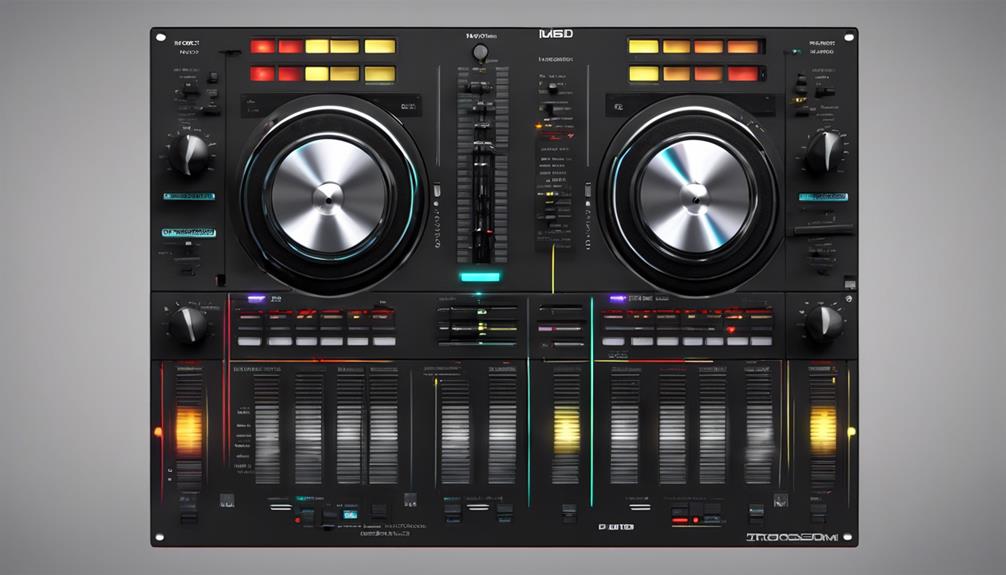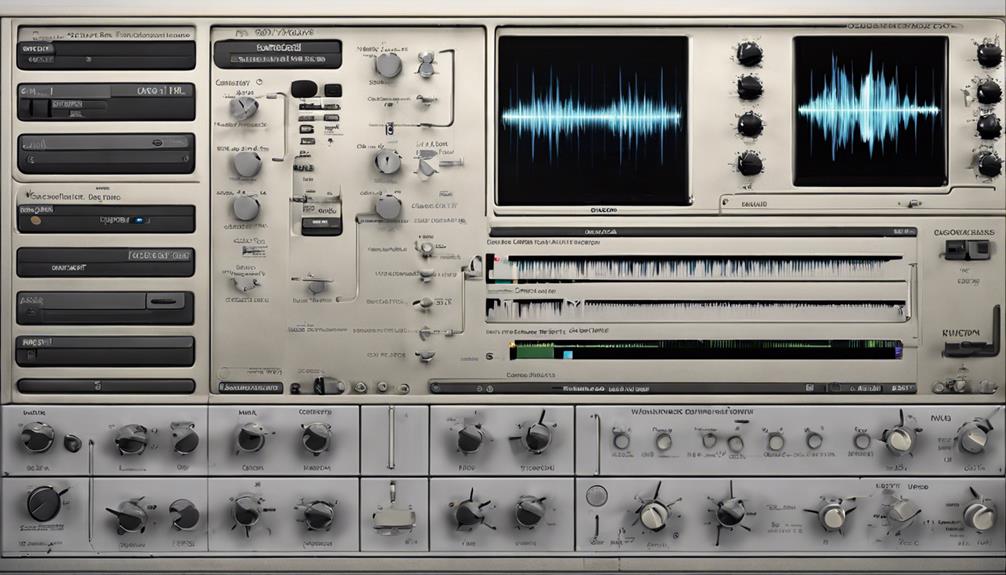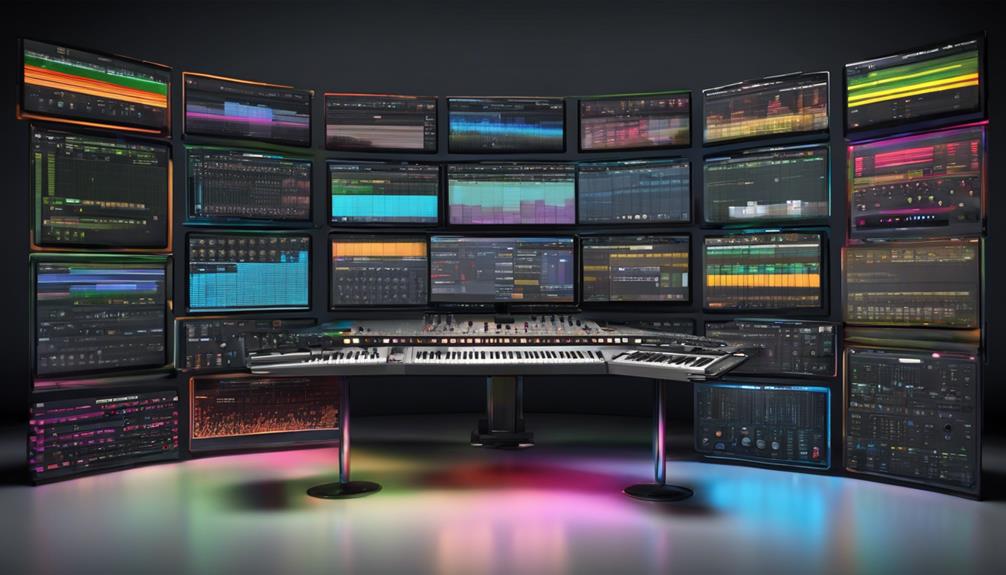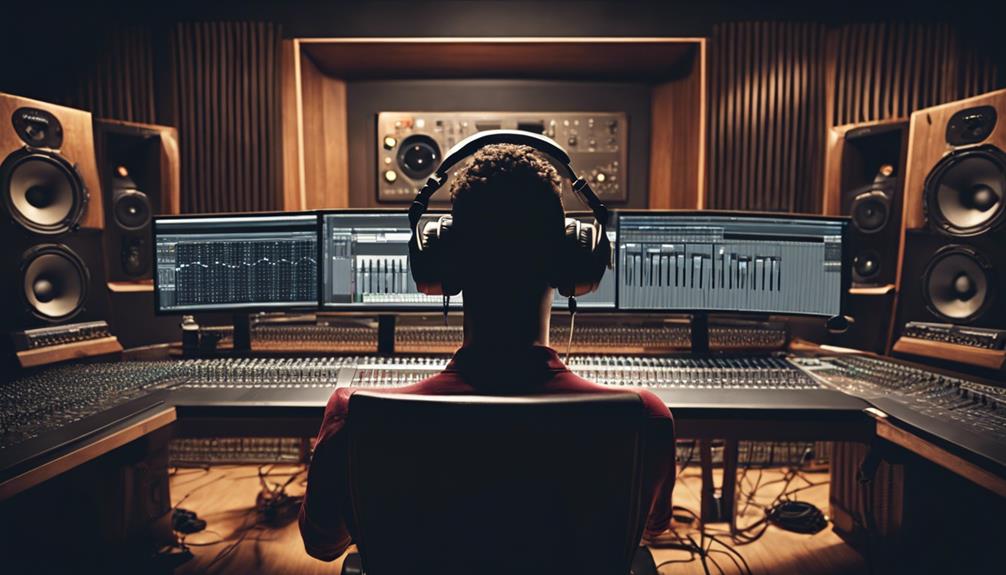To become an expert at mixing songs, you should follow these 5 essential steps. Start by ensuring you have a quiet, well-treated room and set up your studio monitors in the correct position for optimal sound quality. Then, create a strong foundation by organizing and color-coding your tracks. Focus on achieving tonal balance by effectively adjusting frequencies with EQ. Enhance the spatial depth of your mix by utilizing panning and spatial techniques. Finally, perfect your mix by balancing elements and mastering compression with precision. By following these steps, you will be able to create high-quality mixes that stand out in today’s music industry. Unlock the secrets of professional mixing with these expert tips.
Key Takeaways
- Color-code tracks for easy identification and organization.
- Utilize EQ to achieve tonal balance across frequencies.
- Experiment with panning, reverb, and delay for spatial depth.
- Ensure every element is balanced and cohesive in the mix.
- Finalize with mastering compression and attention to detail for a professional sound.
Setting up Your Mixing Environment
When setting up our mixing environment, prioritizing a quiet, well-treated room with minimal background noise is vital.
Creating an ideal space for mixing tracks involves strategic placement of studio monitors at ear level in an equilateral triangle with our listening position. This setup guarantees accurate sound representation and helps us achieve the perfect balance in our mixes.
Additionally, investing in acoustic treatment such as bass traps and diffusers can control reflections and enhance sound clarity, allowing us to make precise adjustments to the audio.
Maintaining signal integrity is essential, so we opt for high-quality audio interfaces and cables to minimize interference in our setup. Having the right tools like EQ and monitor controllers enables us to fine-tune our mixes effectively.
Establishing a Solid Foundation

To establish a solid foundation for our mixing process, it's essential to make certain all tracks in our DAW are properly labeled and organized for efficient navigation and workflow. Here are some key steps to set yourself up for success:
- Color-code tracks: Use visual cues to group similar tracks together, aiding in quick identification during the mix.
- Consistent project layout: Establish a uniform structure across projects to streamline your workflow and enhance organization.
- Cascade tracks: Visually separate elements in your DAW to maintain clarity and a structured overview.
- Arrange by similarity: Group related audio clips together to focus on specific adjustments and improve overall mix coherence.
Crafting Tonal Balance

Crafting tonal balance involves skillfully adjusting frequencies to guarantee a harmonious and cohesive sound in the mix. When working on individual tracks, using EQ to manipulate the frequency range is key. By boosting or cutting specific frequencies, you can achieve a full and even sound that encompasses lows, mids, and highs.
This balanced approach secures that no element overpowers the others, allowing each part to shine through clearly. Striking the right tonal balance not only enhances clarity but also adds depth and overall quality to the mix. It's essential to pay attention to the frequencies present in each track to maintain a well-balanced mix that sounds professional and polished.
Enhancing Spatial Depth

Experimenting with various spatial techniques is essential for achieving a rich and immersive sound in our mix. To enhance spatial depth, we can employ a combination of techniques that will glue the mix together and create a sense of space within the music.
Here are some innovative ways to shape the tone and add depth to your mix:
- Utilize panning techniques to create spatial separation and place instruments within the stereo field effectively.
- Experiment with reverb settings to simulate different room sizes, adding depth and dimension to the sound.
- Incorporate Delay effects to create echoes and enhance spatial effects, contributing to a more immersive listening experience.
- Use spatial processing techniques like stereo widening to expand the soundstage and enhance the perception of space.
Finalizing With Precision

In finalizing a mix with precision, we meticulously guarantee every element is balanced and cohesive. Attention to detail is paramount as we make subtle tonal adjustments to iron out any remaining issues and guarantee a seamless listening experience.
Mastering compression plays an essential role in maintaining a consistent sound quality across various platforms, elevating the final mix to a competitive standard. By comparing our final mix to commercial releases, we can gauge its competitiveness and make necessary refinements to achieve a professional sound.
Achieving balance and cohesion in the mix requires a keen eye and ear for detail, ensuring that every element works harmoniously together. Embracing precision in the finalization process is key to delivering a polished product that stands out in today's music landscape.
Frequently Asked Questions
What Are the Steps of Mixing a Song?
When mixing a song, the steps typically involve setting initial levels for each track, balancing audio elements for clarity, applying EQ adjustments to fix frequency imbalances, using compression to control levels, and adding dimension with effects like reverb and delay.
These steps are essential for achieving a polished mix that sounds professional. Mastering these techniques can elevate your music production skills to the next level.
How Do You Master a Song Like a Pro?
When mastering a song like a pro, we focus on final touches for top-notch sound quality. Utilize tools like EQ, compression, and limiting. Guarantee consistent volume levels, clarity, and tonal balance.
Pay attention to details like frequency adjustments, stereo imaging, and dynamic range. Compare your mastered song to professional tracks for competitiveness and quality.
How Do You Master Mix Music?
When we master mix music, we focus on enhancing the final audio quality by adjusting clarity, balance, and overall sound. This involves fine-tuning dynamics, EQ, and stereo imaging for best playback across different systems. Utilizing tools like multi-band compression and limiting helps us optimize the mix for streaming platforms and radio standards.
Our goal is to achieve a cohesive, balanced, and polished sound that stands out in the music industry.
How Do You Master a Song Step by Step?
When mastering a song step by step, we begin by setting levels to avoid clipping and guarantee a balanced mix.
Utilize EQ for frequency adjustments and sonic space carving.
Employ compression to control dynamics and shape impact.
Create depth with reverb and spatial effects.
Polish by refining changes and ensuring consistency for a professional sound.
These steps, when followed diligently, lead to a well-mastered song with a polished finish.
Conclusion
Mastering the art of mixing songs requires patience, practice, and precision. By following these five pro steps – setting up your mixing environment, establishing a solid foundation, crafting tonal balance, enhancing spatial depth, and finalizing with precision – you can elevate your music to new heights.
So, put on your headphones, grab your mixing board, and get ready to create mesmerizing sounds that will leave your audience in awe. Embrace the art of mixing and let your creativity shine through!










